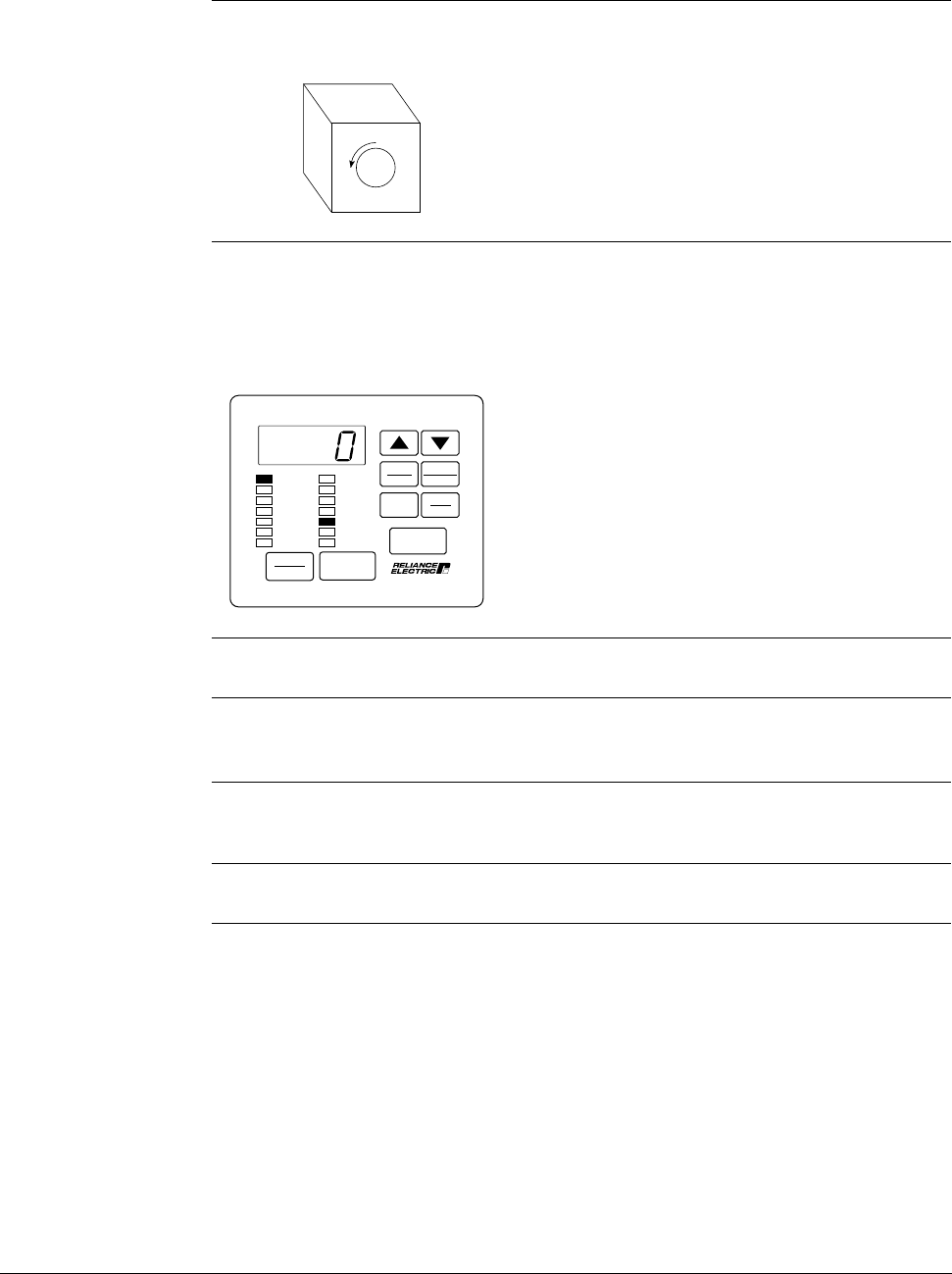Software Start-Up and Ref. Owner manual
Table Of Contents
- GV3000/SE AC General Purpose (V/Hz) and Vector Duty Drive, 1 - 20 HP, 230V AC Software Start-Up and Reference Manual D2-3387-5
- Important User Information
- Document Update
- Summary of Changes
- Table of Contents
- List of Figures
- List of Tables
- Preface
- Chapter 1 - Starting Up the Drive for Volts/Hertz Regulation
- Chapter 2 - Starting Up the Drive for Vector Regulation
- Chapter 3 - Using the Keypad/Display To Program, Monitor, and Control the Drive
- Chapter 4 - Programming Reference
- Chapter 5 - Troubleshooting the Drive Using Error Codes
- Appendix A - Alphabetical Listing of Parameters
- Appendix B - Record of User Parameter Settings
- Appendix C - Power Module-Dependent Parameter Default Values (230 V Series)
- Appendix D - Default Parameter Settings
- Appendix E - Configuring the Digital Inputs When the RMI Board Is Installed in the Drive
- Appendix F - Using the Terminal Strip Analog Input
- Appendix G - Drive Regulation Overview
- Back Cover / Publication D2-3387-5 July 2013

2-33
Starting Up the Drive for Vector Regulation
Step 10.8 Visually check that the motor rotates counter-clockwise (CCW) when
viewed from the driven motor shaft end.
CCW
Step 10.9
• If the rotation direction is NOT correct, press the STOP/RESET key and
continue with Step 10.10.
• If the rotation direction is correct, continue with Step 10.14.
AUTO
MAN
Forward
Reverse
PROGRAM
RUN
JOG
STOP
RESET
START
ENTER
SPEED
VOLTS
AMPS
Hz
Kw
TORQUE
Password
RUNNING
REMOTE
JOG
AUTO
FORWARD
REVERSE
PROGRAM
When the STOP/RESET key is pressed, the
RUNNING LED turns off.
Step 10.10 Turn off and lock out or tag power to the drive.
Step 10.11 Verify that the DC bus capacitors are discharged. Refer to hardware
reference manual for this procedure.
Step 10.12 Switch any two of the motor leads (U, V, or W) and A and A NOT on
the encoder.
Step 10.13 Turn power on, and press the START key. Repeat Step 10.8.
Step 10.14 To make sure the drive is not inadvertently started, turn off and lock
out or tag power to the drive. Verify that the motor direction is
appropriate for the required machine direction, and then connect the
motor to the load.










